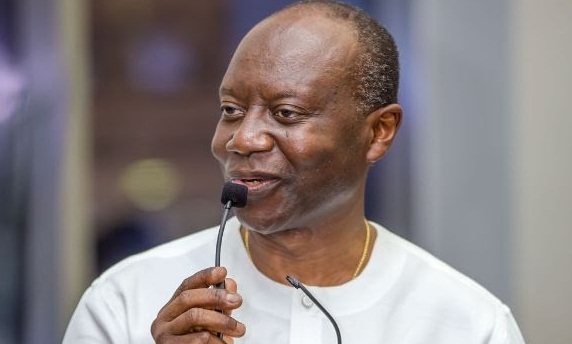
The Ministry of Finance issued a paper with rules for full implementation of the Electronic Transactions Levy (E-Levy) in May 2022, following its passage on Tuesday, March 29, 2022.
The decision comes after Parliament passed the E-Levy under a certificate of urgency in the absence of Minority legislators who staged a walkout during the Bill’s discussion stage before the second and third readings.
The Ministry released the FAQs document that includes some questions that the general public is likely to ask, as well as some responses. The Finance Ministry responded to certain key questions in the four-page paper.
While speaking to journalists on the sidelines of the State of the Nation Address, Ken Ofori-Atta, the Finance Minister, hinted that his ministry has already begun discussions with the Controller and Accountant General’s Department (CAGD) and the Ghana Revenue Authority (GRA) to ensure a smooth implementation of the policy.
Read the full FAQs paper here
He mentioned that the CAGD and GRA “have indicated to us that, right at the beginning of May, they should be able to get their systems together.”
Understanding the Ghanaian E-levy
The Electronic Transfer Levy Bill, often known as the E-levy, was signed into law by President Nana Akufo-Addo two days after it was passed by parliament, in a tumultuous circumstances.
The Minister of Finance first announced the introduction of the “Electronic Transaction Levy” or “E-Levy” of 1.75 percent on electronic transactions exceeding GHs 100 (US$16) per day on November 17, 2021, during the presentation of the 2022 Budget Statement and Economic Policy of Government to the Ghanaian Parliament.
Mobile money payments, bank transfers, merchant payments, and inbound remittances will all be subject to the fee (Ministry of Finance 2022 Budget Highlights).
Except for inward remittances, when the charge will be borne by the receiver, all charges will be borne by the sender.
Read Also: Kenya inches closer to collecting digital taxes
According to the Finance Minister, overall digital transactions in Ghana were expected to exceed GH500 billion (US$81 billion) in 2020, up from GH78 billion (US$12.5 billion) in 2016.
As a result, the government expects to earn about GH6.96 billion (US$1.1 billion) in tax revenue in 2022, and about GH26.90 billion (US$4.5 billion) from 2023 to 2025, once the electronic transaction levy is implemented to assist extend the tax net and bring in the informal sector (PwC 2022 Budget Digest).
This news has elicited mixed reactions from industry stakeholders, with some supporting the tax as a means of raising income and others opposing the policy for its negative impact on digital payments and the digitization journey that Ghana is leading.
The Services sector contributed 51.9 percent of Ghana’s GDP in the first half of 2021, with the bulk coming from the Information and Communication sub-sector, creating a compelling case for the government to evaluate that sector in its effort to produce more money.
Many analysts, however, believe that the government should look into a variety of tax revenue sources rather than focusing on one large source of money from electronic transactions.
Source: Ghanaweb | UNCDF
Abeeb Lekan Sodiq is a Managing Editor & Writer at theafricandream.net. He’s as well a Graphics Designer and also known as Arakunrin Lekan.




